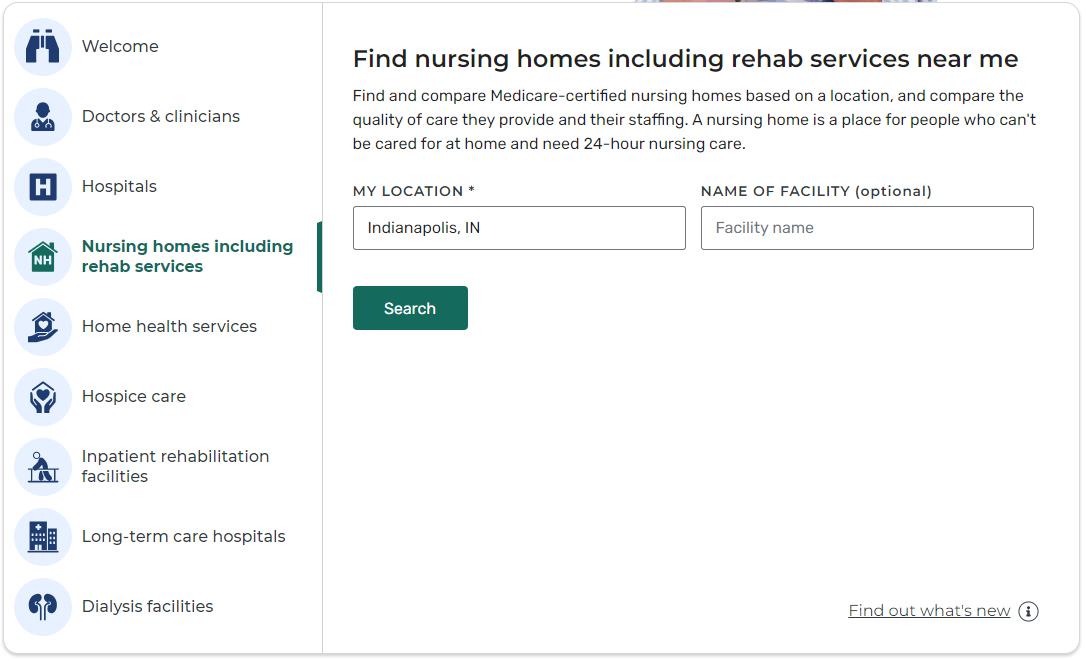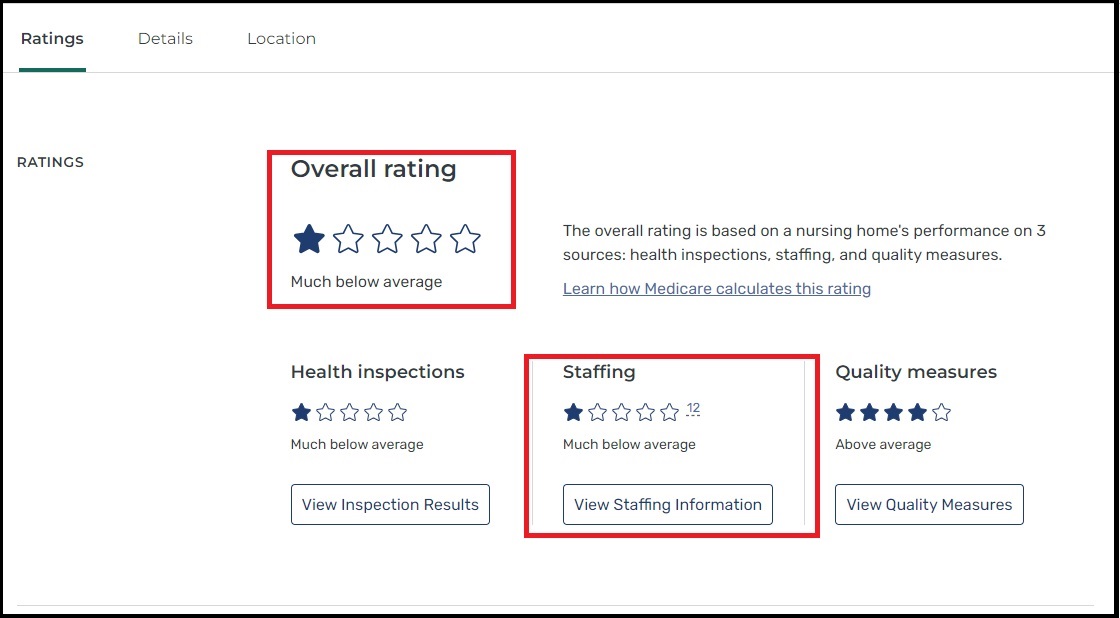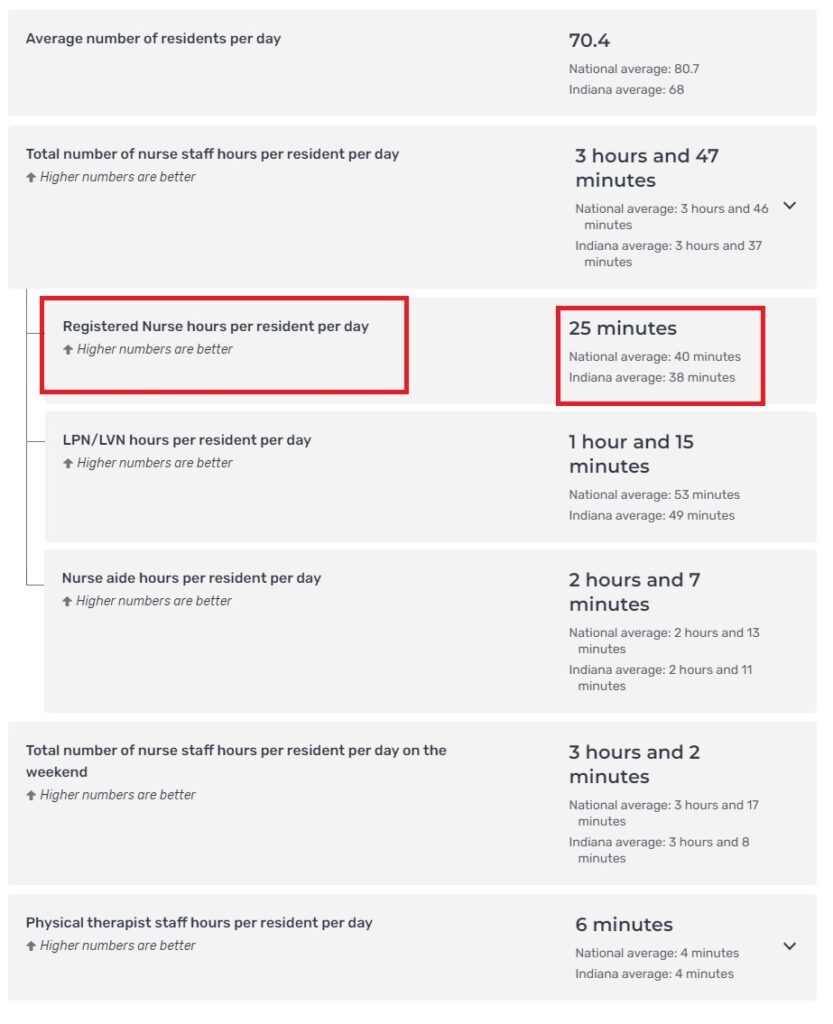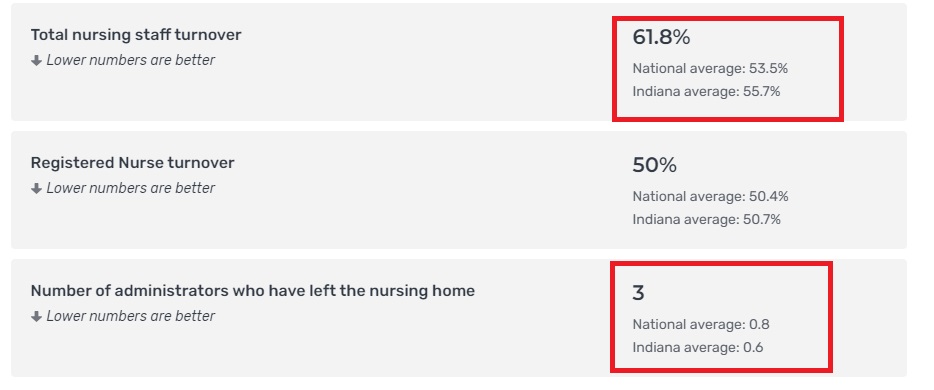How To Research A Nursing Home’s Staffing Levels Using Medicare’s Nursing Home Compare’s Website
How To Research A Nursing Home’s Staffing Levels Using Medicare’s Nursing Home Compare’s Website
Introduction
Choosing a nursing home can be a complex and emotionally challenging process. Most all nursing homes claim they provide great care and are able to meet a prospective patient’s needs; however, the incidence of nursing home neglect and substandard care remains prevalent. Knowing how well-staffed a nursing home is can help you make an informed decision about which facility to choose for yourself or a loved one. Perhaps the best source of publicly available information can be found using Medicare’s “Nursing Home Compare” website. This website contains information about each nursing home that receives Medicare or Medicaid funding, including details related to the staffing of the facility.
Why are staffing levels so important in nursing homes?
Staffing levels in nursing homes are of paramount importance as they directly impact the quality of care and the well-being of residents. A sufficient and adequately trained staff is essential to provide individualized attention, monitor residents’ health, and assist with daily activities. Inadequate staffing can lead to rushed care, neglect, and increased risk of medical errors. Moreover, staffing shortages can result in burnout among the remaining staff, leading to high turnover rates and decreased continuity of care. Adequate staffing not only ensures that residents receive the attention and support they need but also fosters a safer and more nurturing environment, promoting residents’ physical and emotional health while enhancing their overall quality of life. Therefore, maintaining appropriate staffing levels is crucial for delivering the compassionate and effective care that nursing home residents deserve.
Federal law mandates that nursing homes must provide an adequate staff to meet the needs of its residents. Assessment of staffing must take into consideration the unique care needs of residents in each facility. For instance, a nursing home with residents requiring extensive healthcare due to multiple health issues would be expected to have a higher number of nursing staff compared to a facility with residents needing less medical attention.
Warning Signs That A Nursing Home May Be Understaffed
There are some warning signs that suggest a nursing home may be understaffed. These include the following:
- Do patient call lights go unanswered?
- Is it hard to find staff when you walk through the facility?
- Do patients have fresh water readily available?
- Are food trays often left mostly uneaten?
- Are bed bound patients not being turned and repositioned frequently?
- Does the facility have a high staff turnover?
- Does the facility have a bad odor?
- Are patients left in their beds late into the morning?
- Are patients awakened and dressed very early in the morning against their preference?
- Are patients receiving their medications late?
- Do phone calls to nursing go unanswered?
If the answer to any of these questions is yes, there could be a staffing problem.
Types of Staff Providing Care in a Nursing Home
To understand the information available on the Nursing Home Compare website, it is first important to understand the various types of staffing in a nursing home. Care in a nursing home is provided by various types of healthcare providers, including the following:
- Registered Nurse (RN): Registered nurses (RNs) are responsible for the overall delivery of care to the residents. Nursing homes must have at least one RN for at least 8 straight hours a day, 7 days a week.
Licensed Practical Nurse (LPN) and Licensed Vocational Nurse (LVN): LPNs/LVNs provide care under the direction of an RN. - Certified Nurse Aides (CNAs): CNAs work under the direction of a licensed nurse to assist residents with activities of daily living. All CNAs must have completed a nurse aide training and competency evaluation program within 4 months of their employment. They must also pursue continuing education each year. CNAs provide care to nursing home residents 24 hours per day, 7 days a week.
- Physical therapist (PT): PTs help residents improve their movement and manage their pain. PTs test muscle strength, the amount of flexibility in joints, and a resident’s ability to walk or move. PTs often work with other providers, like doctors, nurses, and occupational therapists to create individualized therapy plans to address and restore the resident’s physical function and well-being.
- Administrator: Each nursing home must have an administrator that is licensed according to each state’s requirements. Administrators are responsible for the overall management of the facility.
Information Available on the Nursing Home Compare Website
Nursing homes report to Medicare how many hours of care its staff provides to residents. The Nursing Home Compare website will take the total number of hours reported by the nursing home for each care provider in a given year and divide it by the number of residents. This will provide the number of caregiver hours per day each resident receives on average. So, for example, you can access insight into the following metrics so that you can compare any nursing home to others, and to state and national averages:
- Average number of residents at the facility per day
- TOTAL number of nurse staff hours per resident per day, including specifics on the following sub-categories:
- Registered nurse hours per resident per day
- LPN/LVN hours per resident per day
- Nurse aide hours per resident per day
- Physical therapist staff hours per resident per day
Weekends are notorious for understaffing in nursing homes. Accordingly, the Nursing Home Compare website also provided insight on the total number of nursing hours per resident per day specifically on the weekends.
Further, nursing turnover is a warning sign for an understaffed, poorly performing nursing home. It often indicates working conditions are poor, thus leading to staff seeking jobs elsewhere. It can also mean that those hired were poor performers and failed to provide adequate care to the patients. Accordingly, the Nursing Home Compare website reports information about the following metrics:
- Total nursing staff turnover in a year
- Registered nurse turnover in a year
- Number of administrators have left the nursing home in a year
Example of Information Available
To find information on staffing levels, first go to the Nursing Home Compare website. Once you are there, you should see a screen that allows you to input your location and find information about nursing homes in your area.

On the left side of the screen, make sure the “Nursing homes including rehab services” tab is selected. Then, type in your location and click the green “search” button. You can also search facilities directly by name using the “Name of Facility” box.
Once you have the location set, the CMS website will show a map of the nursing facilities in that area, along with an overall rating for each facility.
To view a more detailed rating of each facility, simply click on the facility’s name on the left side of your screen. Once a facility has been selected you can see its overall and individual ratings. For this example, we selected one of the nursing homes in the Indianapolis area. At the top of the page, the “Overall rating” will be displayed, with ratings on health inspections, staffing and quality measures reflected below. For this article, we will focus on the staffing ratings.

As you can see from the screenshot above, the overall rating for this nursing facility is shown to be one star out of five. Moreover, the staffing rating is also just a one star out of five. The staffing rating is based on six different things:
- Registered nursing hours per resident per day.
- Total nursing hours per resident per day.
- Total nursing hours per resident per day on the weekend.
- Total nurse staff turnover within a year.
- Registered nurse turnover within a year; and
- Number of administrators who have left the facility in a year.
To view more detailed information on staffing, click the “View Staffing Information” button just under the staffing rating. Clicking this “View Staffing Information” button will give you a pop-up screen with all of the available statistics on staffing at this facility. The metrics provided also include a comparison to state and national averages. For example, the registered nurses hours per resident per day is significantly lower than the national and state average at this facility – indicating inadequate staffing.

Below this section, is information provided specifically about registered nursing (RN) staffing, because RNs are the most highly trained of the nursing staff in the facility, and who are responsible for coordination, management and overall delivery of care to the residents. Facilities with sicker patients may need more RN caregivers than other facilities.

Staff Turnover
Below the information about RN care, you will see information about staff turnover. Staff turnover in nursing homes isn’t just a logistical concern — it can deeply impact the quality of care and the overall environment of the facility. Below are the metrics reported for this facility on staff turnover.

The nursing home selected has a higher total nursing staff turnover than the national and state average. Retaining a familiar nursing staff is important for any resident in a nursing home – it helps build relationships, maintain comfort, and ensure quality care. Even more concerning for this facility, however, is the number of administrators who have left in the past year. Turnover rates for administrators at this nursing home are nearly four times higher than the national average and five times higher than the state average. Without stable employment at the administrative level, the environment within a nursing home can deteriorate. This can lead to a decrease in the quality of care as well as an impact to the turnover rate for other staff. Beyond that, staff turnover is an important indicator for a number of reasons.
Implications for Care Quality: A high turnover rate can signal problems in the working environment, potentially indicating issues such as inadequate training, low morale, or burnout. Constantly changing staff can disrupt the continuity of care, as new members might not be immediately familiar with residents’ specific needs, preferences, and medical histories. This can lead to errors, inconsistencies, and gaps in care.
Relationship Building: Building trust between residents and caregivers is essential for a harmonious living environment. Frequent staff changes disrupt this trust-building process. When residents see familiar faces, they feel more secure, understood, and valued. On the flip side, a constantly revolving door can lead to feelings of uncertainty and anxiety among residents.
Training and Experience: Every time a staff member leaves and a new one joins, there’s a learning curve. Even if the new staff member is experienced, they still need to familiarize themselves with the facility’s protocols, residents, and specific care plans. Repeated turnovers mean that a significant portion of the staff might always be in this adjustment phase, potentially leading to lapses in care.
Economic Implications: Continual hiring and training are costly. If a nursing home is always in recruitment mode due to high turnover, it indicates a potential misallocation of resources that could otherwise be invested in resident care or facility upgrades.
Gauging Turnover on the Nursing Home Compare Website: While the website focuses heavily on quantitative metrics like staffing levels, it’s worth reaching out to individual facilities if you have concerns about staff turnover. Directly asking about their turnover rates and retention initiatives can give you a clearer picture of the facility’s environment.
Conclusion
Making the decision to place a loved one in a nursing home, or considering it for oneself, is never easy. It’s a choice layered with emotion, responsibility, and the aspiration for quality care. The Nursing Home Compare website, with its expansive database and user-centric design, can be an important tool at your disposal.
Frequently Asked Questions (FAQs):
Q1: How can I find information on staffing levels at nursing homes on the Nursing Home Compare website?
A1: To access staffing information for nursing homes on the Nursing Home Compare website, simply visit the website and search for the specific nursing home you are interested in. Once you find the facility, you can click on its profile, and there you will find detailed information on staffing levels, including the average number of hours worked by nursing staff per resident per day. This data can be quite helpful in assessing the adequacy of staffing at a nursing home.
Q2: What staffing levels are considered adequate in a nursing home?
A2: While there is no one-size-fits-all answer to this question, adequate staffing levels in nursing homes generally involve having a sufficient number of registered nurses (RNs), licensed practical nurses (LPNs), and certified nursing assistants (CNAs) to meet the complex care needs of residents. It’s essential to consider the specific needs of the residents at each facility, as staffing requirements can vary based on the level of care required. It’s a good practice to compare staffing levels among nursing homes in your area to get a sense of what is typical and to look for any significant deviations.
Q3: How does understaffing in nursing homes affect the quality of care?
A3: Understaffing in nursing homes can have serious consequences for residents’ well-being. When there are not enough staff members to adequately care for residents, it can lead to rushed care, missed medications, delayed responses to call bells, and reduced attention to residents’ individual needs. This can result in decreased quality of care, increased risk of falls, pressure ulcers, and even adverse health outcomes. It’s crucial for families and caregivers to be vigilant about staffing levels and advocate for their loved ones to ensure they receive the proper care and attention they deserve in a nursing home setting.
